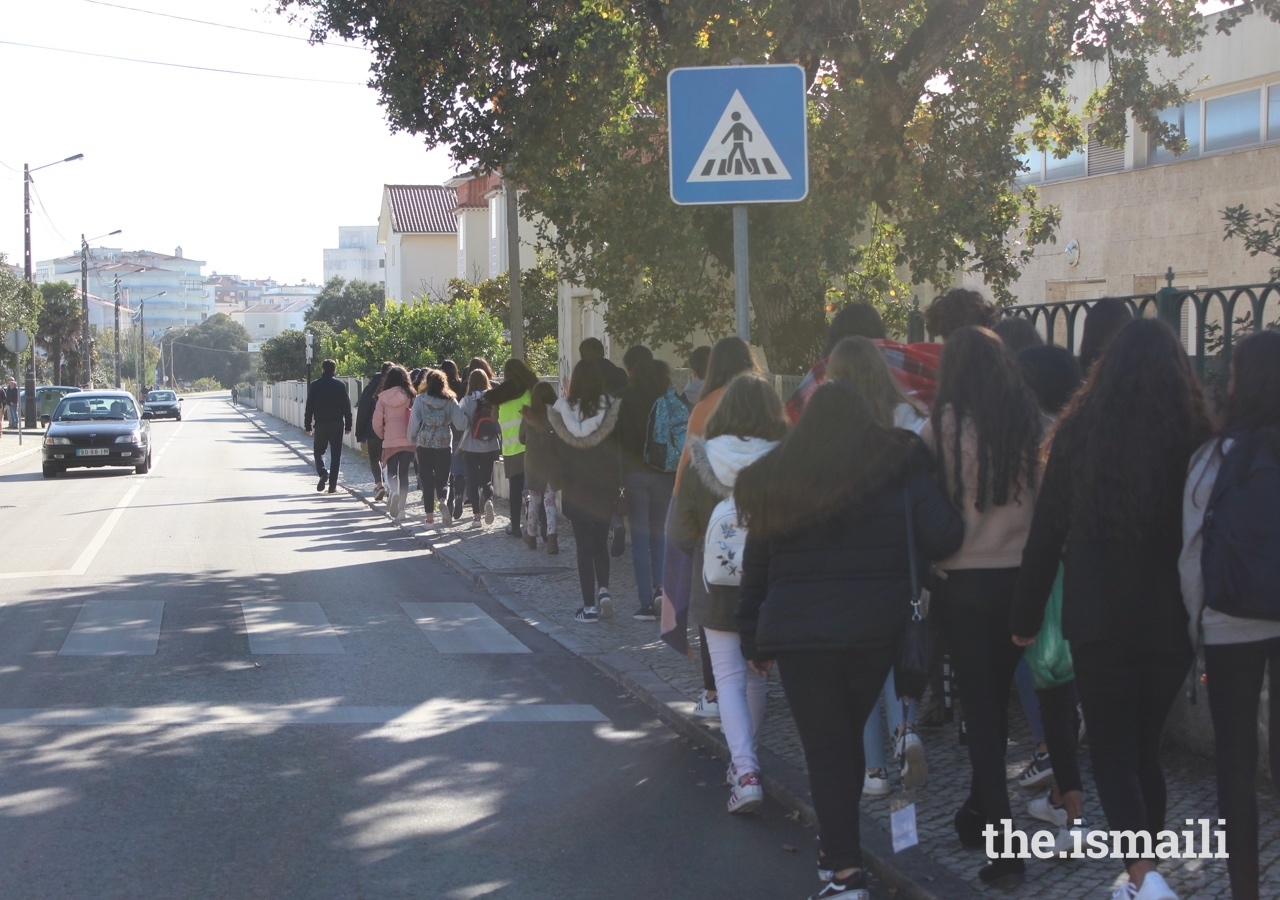Assured of the potential a visit of this kind would have in developing a spirit of tolerance, respect, and pluralism, religious education teachers from both communities planned the visit with the aim of allowing students to engage in a dialogue of religious experience.
The exchange between the two communities began with an emblematic gift from the Ismaili students: an olive tree, the universal symbol of peace and friendship. The planting of the olive tree in the S. Tomás de Aquino Parish garden provided an opportunity for the students to learn about one another while deliberating on concepts such as pluralism and social conscience and reflecting upon their shared religious heritage, one another’s principles and ethical values.
According to legend, the Sanctuary of Fátima takes its name from a North African girl captured during the Reconquista of the Iberian Peninsula, and has become one of the most significant and symbolic sites of pilgrimage in Portugal. It accommodates several buildings and monuments, and attracts approximately four million Roman Catholic pilgrims from all around the world every year to express their devotion.
The students’ programme included a quiz, a visit to the Chapel of Apparitions followed by a moment of contemplation, a tour of the exhibition Fatima: Light and Peace, lunch at the Sisters of Charity of St Vincent de Paul, and a scavenger hunt through which students and teachers explored the different spaces and monuments within the sanctuary. On their way back home, both communities shared a prayer.
Secondary teacher Shabnam Gulamhussen said of the visit: “Due to its history and religious symbolism, this collective exploration enabled students to deepen their understanding of some basic tenets of their religious traditions, namely the role of pilgrimage as a spiritual journey.”
Students also shared their impressions of the experience. Shahiza Jivraj, aged 15, remarked that the trip to Fátima was a “space to reflect on what is common and different in our religions and that despite our differences, we can live as brothers and sisters.”
In the same vein, Rania Husseine, 12 years, said, “It was wonderful to learn about our common values on a date so special to them.”
Finally, Noor Hassam, 14, noted how this programme “opened our horizons towards other cultures and traditions and fostered new relationships.”
As their teacher Shabnam highlighted, “Interfaith dialogue is dialogue of learning; while facilitating cultural and religious understanding, it will help our youth become more confident in articulating their religious identity.”










